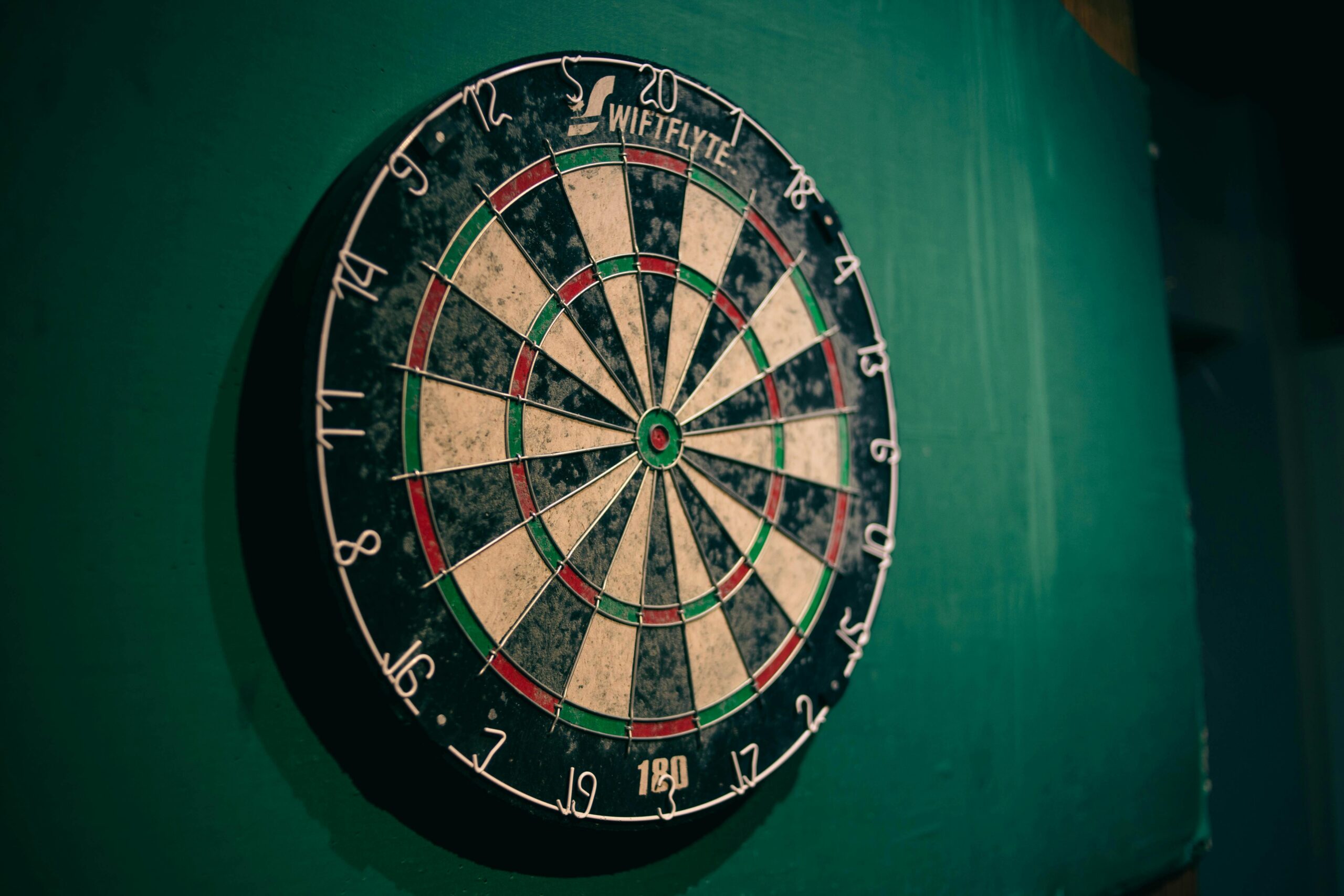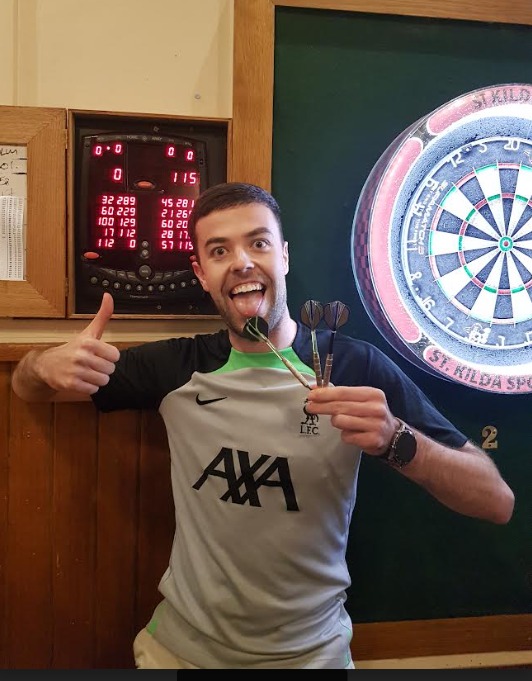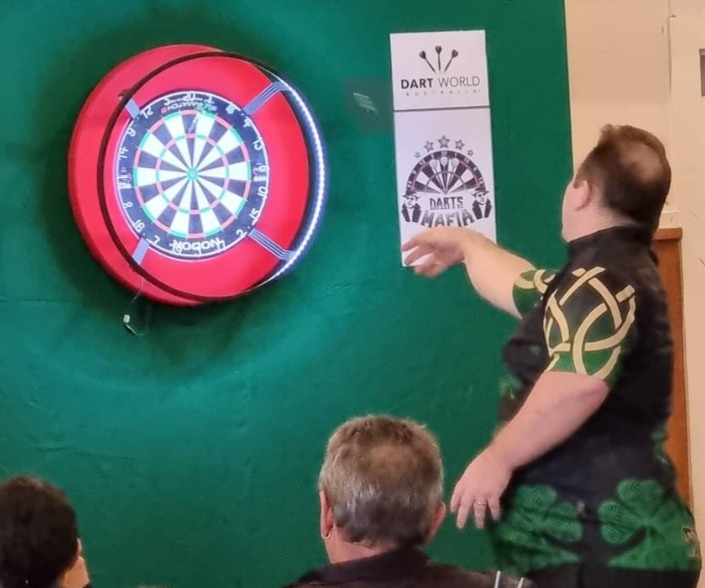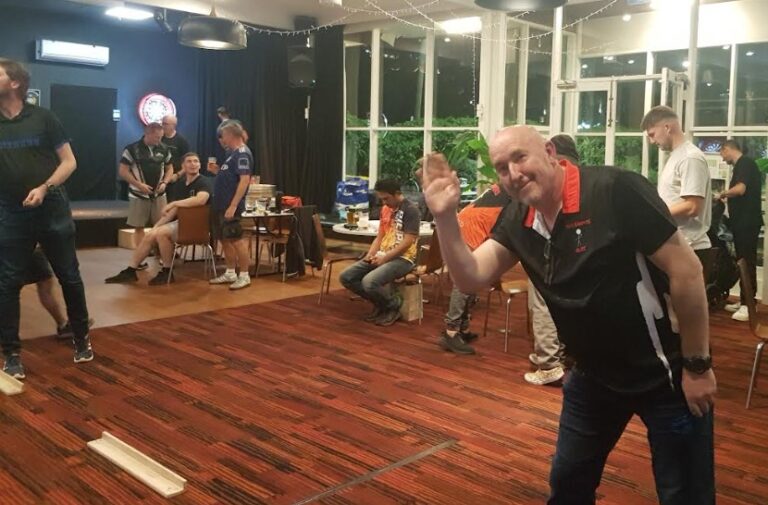Darts: An Unexpected Medieval Pastime
You might not realise it, but that casual game of darts at your local pub has roots stretching back to mediaeval times. Imagine soldiers using spearheads for target practice, honing their skills between battles. Over the centuries, this practical training evolved into a social pastime, making its way into English pubs by the early 20th century. How did this shift happen, and what role did early dart boards play in the evolution of the game? By exploring these questions, you’ll uncover the rich history and cultural significance that transformed a military exercise into a beloved modern sport.
Key Takeaways
- Mediaeval soldiers practiced dart-like games with spearheads to improve targeting skills and unit cohesion.
- Darts originated from soldiers’ training practices during the Middle Ages.
- Early dart boards were crafted from tree trunk slices, incorporating scoring methods.
- Darts transitioned into a social game in English pubs, building community bonds.
- The National Darts Association standardised the game in 1924, promoting fair competition and recognition.
Origins in Archery Practice
In the Middle Ages, soldiers turned to throwing spearheads at targets to practice their archery skills and pass the time. Imagine being a soldier back then, seeking ways to keep your aim sharp and your mind active during long periods of downtime. This practice not only improved your archery techniques but also provided essential soldier entertainment.
Throwing spearheads or other sharp objects at targets allowed you to refine your precision and accuracy. It was a creative way to maintain readiness for battle while also fostering a sense of camaraderie among your fellow soldiers. The makeshift game became a staple in the camps, serving both as training and a way to stave off boredom.
This activity soon found its way into more social settings. Mediaeval taverns and public houses became popular venues for these impromptu competitions. Here, the game began to evolve from a mere training exercise to a form of leisure and social interaction.
The competitive spirit thrived as soldiers and civilians alike took turns aiming at targets, blending skill with entertainment. Therefore, what started as a practical means to enhance archery techniques gradually transformed into the beloved game of darts.
Evolution Through the Ages
From mediaeval practice to modern pastime, darts have undergone a fascinating transformation over the centuries. What began as throwing dangerous weapons like spears has evolved into a game played with pocket-sized darts. This shift marks a significant point in the historical significance of darts.
In the early 20th century, English pubs adopted darts, helping it grow from a casual activity to a competitive sport. This period saw remarkable popularity grow, turning darts into a beloved pub game. The first organised darts championship in the 1920s signalling the competitive transformation of the game. It wasn’t just a pastime anymore; it was a sport.
The establishment of the National Darts Association in 1924 further solidified darts as a recognised, structured sport. This move contributed to the cultural evolution of the game, paving the way for its widespread acceptance. By the 1930s, darts had moved from pubs into households, expanding its reach and popularity.
Today, darts isn’t just a relic of the past; it’re a demonstration of how a simple activity can evolve over time and capture the hearts of millions. It shows how traditions adapt, grow, and become integral to our lives.
Transition to Public Houses
The evolution of darts into public houses during the Middle Ages turned the game into a vibrant social activity that brought people together. Public houses, like taverns and inns, became the perfect setting for darts enthusiasts to gather, fostering both competition and camaraderie. You’d find patrons of all sorts honing their skills, engaging in friendly rivalry, and enjoying the leisure this pastime provided.
Darts in public houses wasn’t just about throwing sharp objects at a board; it was about the experience. Social gatherings in these venues had a unique energy, amplified by the competitive spirit of the game. Here’s why this evolution was significant:
- Inclusive Entertainment: Diverse groups of people found common ground.
- Skill Development: Regular play helped participants improve.
- Community Building: Stronger bonds formed among patrons.
- Cultural Spread: The game’s popularity grew across communities.
Standardisation of Rules
As darts continued to thrive in public houses, the necessity for standardised rules became apparent to guarantee fair and consistent gameplay across various venues. Without uniform guidelines, players faced discrepancies that hindered fair competition. This need for rule consistency led to significant changes in the 19th century.
Standardised rules provided a level playing field, transforming darts from a casual pub game into a recognised sport. These rules ensured every player faced the same conditions, promoting fair competition and enhancing the game’s integrity. Efforts to standardise darts rules culminated in the establishment of the National Darts Association in 1924. This organisation played a pivotal role in formalising the game’s regulations.
With consistent rules in place, darts saw a surge in competitive spirit. Players could now compete under the same conditions, making the game more thrilling and equitable. The evolution of these standardised rules not only made competitions fairer but also helped foster a sense of community among darts enthusiasts. It allowed players to test their skills on an equal footing, encouraging sportsmanship and camaraderie.
Ultimately, the standardisation of rules was essential in elevating darts to a respected and organised sport, enjoyed by many.
Technological Impact
Technology has revolutionised darts, making the game more accessible and engaging for players around the world. You can now enjoy an enhanced experience thanks to various technological advancements. Electronic dartboards with advanced sensors guarantee accurate scoring, eliminating the frustration of human error. Automation of scoring systems has streamlined gameplay, allowing you to focus solely on your performance.
Digital advancements have also introduced player analytics, giving you insights into your game that were previously unimaginable. You can track your progress, identify strengths and weaknesses, and make data-driven improvements.
Consider the following benefits of technology in darts:
- Interactive experiences: Real-time feedback and augmented reality features make every game more immersive.
- Online tournaments: Compete with players globally without leaving your home.
- Virtual leagues: Join leagues that span continents, breaking down geographical barriers.
- Accurate scoring: Advanced sensors guarantee every point is counted correctly, enhancing fairness and competitiveness.
With these innovations, you’re not just playing darts; you’re part of a global community. The convenience of online tournaments and virtual leagues means you can challenge yourself against the best, no matter where you are.
Cultural Significance
While technology has modernised darts, its cultural significance traces back to mediaeval taverns, where the game united people from all walks of life. The lively atmosphere of these public houses fostered community bonding and social integration, offering a shared pastime that transcended social barriers. Whether you were a noble or a commoner, the dartboard was a common ground where friendly competition thrived.
Darts provided structure to leisure activities and became a staple in pub culture, contributing to its widespread appeal. The game’s simplicity made it accessible, while its competitive nature kept it engaging. This duality allowed darts to entertain and bring together individuals in a communal setting, forging bonds and fostering camaraderie.
Here’s a breakdown to illustrate the game’s cultural significance:
| Aspect | Mediaeval Era | Modern Times |
|---|---|---|
| Accessibility | Open to all classes | Universal |
| Setting | Taverns and public houses | Pubs and bars |
| Social Impact | Community bonding | Social integration |
| Popularity | Highly popular | Widely embraced |
In essence, darts has always been more than just a game. It’s a timeless social glue that encourages interaction, breaks down barriers, and promotes unity. Whether in mediaeval times or today, darts continues to be a symbol of connection and shared enjoyment.
Modern Competitive Scene
Elite organizations like the Professional Darts Corporation (PDC) and the British Darts Organisation (BDO) dominate the modern competitive darts scene, which is an enthralling spectacle. These organisations have transformed darts from a casual pub game to a high-stakes sport. Top professional players like Michael van Gerwen, Gary Anderson, and Peter Wright draw massive audiences to their matches, making darts a global phenomenon.
The growth of popularity in darts is evident in several ways:
- Prestigious Tournaments: Events like the World Darts Championship and Premier League Darts showcase the best in the sport.
- Sponsorships: Companies like betting firms and breweries have boosted the financial viability of the sport.
- Broadcasting Rights: Networks such as Sky Sports and DAZN have expanded the global viewership.
- Fan Engagement: Interactive events and social media presence keep fans engaged year-round.
Watching these professional players compete is an electrifying experience. You can feel the tension and excitement in the air as they aim for that perfect score. The combination of skill, focus, and crowd energy creates an atmosphere that’s hard to match.
Whether you’re a long-time fan or new to the game, the modern competitive scene in darts offers something truly captivating.
Frequently Asked Questions
Did they play darts in mediaeval times?
Yes, they probably did. Soldiers and nobles in mediaeval times might’ve enjoyed dart-like games for leisure. You’d find these spirited contests in mediaeval pubs and noble recreation areas, making darts a popular pastime even back then.
Is darts a sport or a pastime?
You’ll find that darts isn’t just a casual pastime anymore; it’s evolved into a dynamic sport. With competitive leagues and lively social gatherings, darts offer both serious competition and a joyous escape from the everyday grind.
What Is the History of Dart Throwing?
Dart throwing’s history started as military training for bored soldiers in the Middle Ages. It evolved into tavern games, shifting from long arrows to shorter darts and using wine barrel covers as targets. Enjoy the freedom of this pastime!
What Is It Called When You Hit the Middle in Darts?
When you hit the middle in darts, it’s called hitting the bullseye. To achieve this, you need precise dart accuracy and solid bullseye techniques. Master these skills, and you’ll dominate the dartboard with freedom and precision.
Conclusion
So, next time you pick up a dart, remember you’re not just playing a pub game; you’re continuing a mediaeval soldier’s practice.
It’s ironic how a tool for war has become a symbol of friendship and fun in modern times.
Darts have evolved from spearheads to sophisticated equipment, proving that even the most unexpected pastimes can leave a lasting legacy.
Embrace the history and enjoy the game, knowing you’re part of something ancient and enduring.







